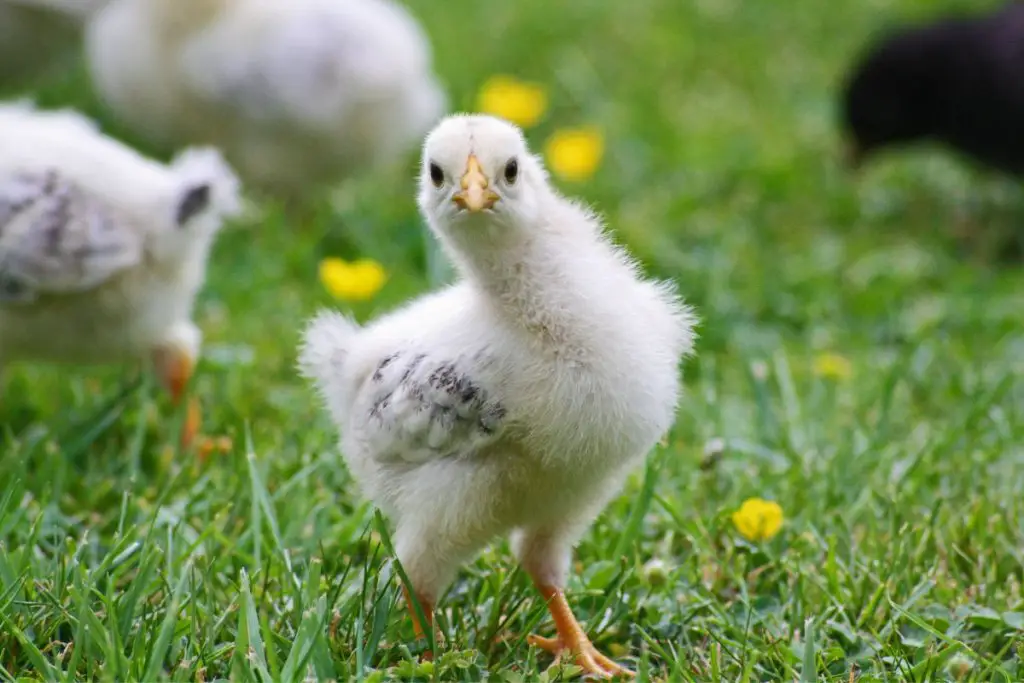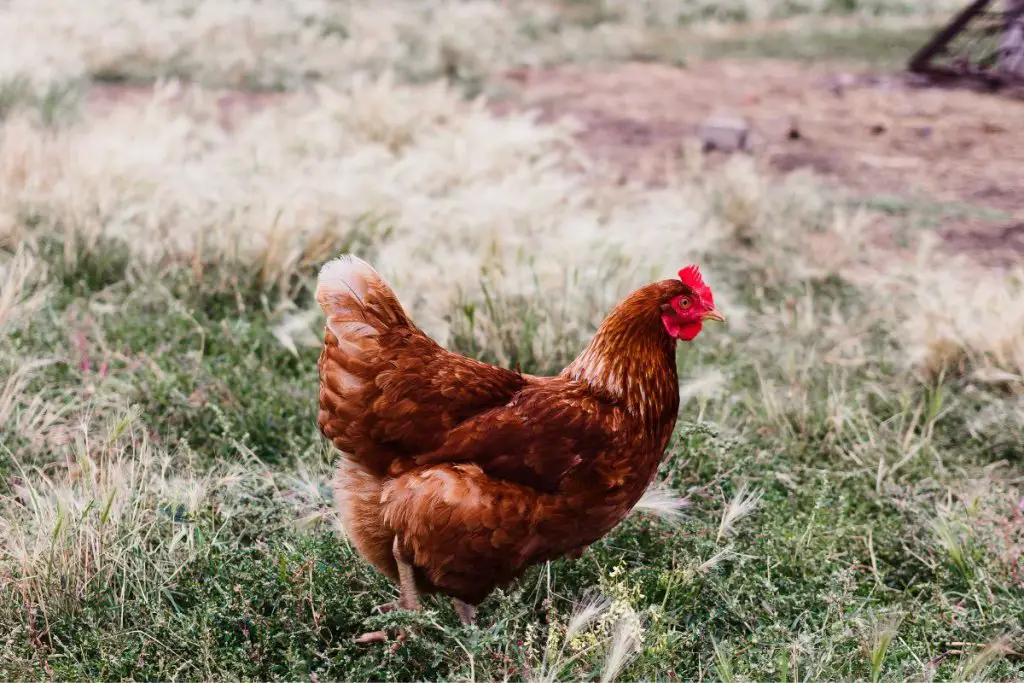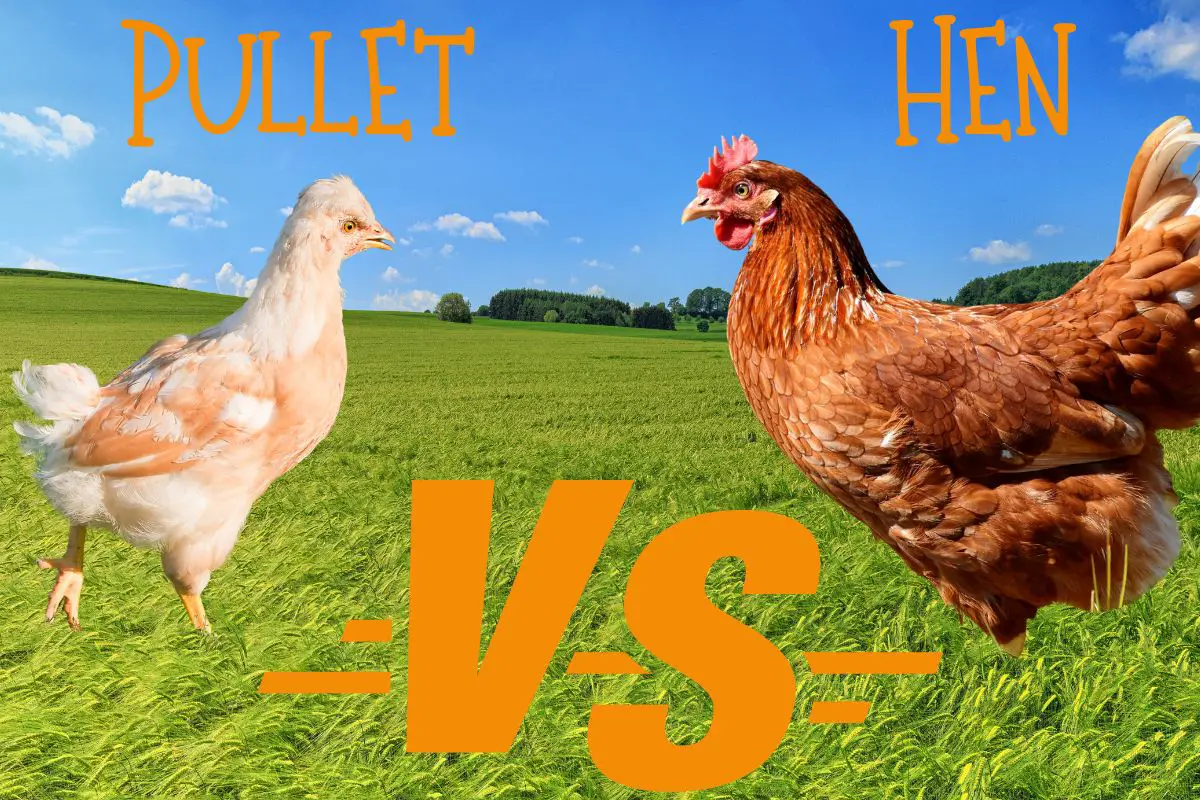A pullet is a 'teenage' chicken while a hen is a fully-grown adult chicken. Pullet’s feathers are cleaner and brighter, although they lay smaller eggs and less frequently. Their temperament displays curiousity while hens are more reclusive, especially when introduced to new flocks.
If you’re interested in setting up a backyard coop or wanting to curate a flock of egg-laying hens, you’ve come to the right place.
You’re about to understand the subtle differences between a pullet chicken and a hen, and how to use this information to build a harmonious flock to suit your needs.
Table of Contents
Lifecycle Of A Chicken
Which came first, the chick or the chicken? If you’re new to owning poultry, it may come as a surprise that there are different terms all referring to the same bird, and the terminology you use will depend upon the age and sex of the bird in question.
Let’s take a moment to examine the lifecycle of the humble chicken and its various stages of development. This knowledge is vital to understanding the difference between a pullet chicken and a hen.
What is a Chick?
Arguably one of the cutest baby animals in the world, baby chicks are famous for their tiny stature, fluffy, down-covered bodies, and adorable, wobbly walk.

Weighing only 2 to 5 ounces when they hatch, these baby chickens are referred to as a chick until they lose their down coat completely, and replace it with feathers, which typically happens around 12 weeks, depending on the breed.
What is a Pullet Chicken?
The teenagers of the chicken world, pullets are female adolescent chickens and their male counterpart is called a cockerel.

Once a chicken has grown clean, new feathers, and appears to be an adult size (roughly 3lbs or so), and their combs and wattles are swollen and red, you have an adolescent pullet, or cockerel on your hands.
Don’t worry – in stark contrast to human teenagers, pullets and cockerels are quite manageable! Pullets are on the verge of becoming adults, the stage at which they will begin to produce eggs.
How do you know if you have an Adult Chicken?
A cockerel will be called a cock (or rooster) once he reaches adulthood. Cocks reach adulthood at roughly 12 months of age.
Meanwhile, once a pullet begins to lay eggs (or reaches a year old), she is generally considered to be an adult, and from that point forward she is called a hen.

The younger the hen, the smaller her eggs will be. As she ages and matures, her eggs will become much larger, and closer to what you’re used to seeing in the grocery stores from commercial hens.
Adult chickens of either sex will have the following characteristics:
- Rougher scales on their legs than when they were younger
- Their legs may lose coloration during their first molt
- Their combs and wattles will also lose coloration while molting
- This coloration change can take place anywhere from 12 to 18 months.
- So if you are seeing a chicken that is mid-molt, you can be confident that it is at least a year old, and no longer a cockerel or pullet.
Senior Chickens
A hen or cock is considered a senior when a few things happen. If you see any of the following signs, you will know that your chicken is past their prime egg-laying and egg-fertilizing years:
- Older birds will begin to show their age and won’t be as active
- Feathers may not look as nice and neat, and may appear out of place
- Their bright colors that you are used to seeing will start to fade
- Their legs will appear incredibly rough with pronounced scales
- Cocks will no longer try to mate with hens
- Birds of both sexes will start to have spurs growing on their legs
- For an adult hen, spurs will not start to grow until roughly 3 years
- Hens will stop producing eggs
What are the visual cues that tell you whether you have a pullet chicken or a hen?
- Feathers – a pullet’s feathers will look clean and have a nice, healthy sheen to them.
- The feathers of a started pullet will appear rounder and smaller
- A younger pullet (16-20 weeks of age) will have a small, hard vent, and thick, inflexible pelvic bones
- A pullet’s eyes will be wide open and alert
- Pullets are more likely to be curious about you and will have more energy
- Color of their legs – older birds will have dull-colored legs, and they will appear rougher
- Birds with spurs or birds with broken nails are tell-tale signs of an older hen
- Size of the eggs – hens will have larger eggs than pullets
Which is better to purchase, a pullet chicken or a hen?
Now that you know the difference between a pullet chicken and a hen, here are some factors to consider when deciding which to purchase.
- Pullets may be more difficult to find than hens, as they are more desirable, with all of their egg laying years ahead of them
- Pullets generally are more expensive than hens
- Some prefer the taste of pullet’s eggs to a hen’s eggs
- Hens will have larger eggs and are more likely to begin laying immediately
- Pullets will have a better chance to imprint (bond with) human caretakers more easily than hens
- Pullets are more easily introduced to an existing flock
Building a backyard chicken coop can be a challenging, but incredibly rewarding experience, especially if you know what you want in your flock. While a pullet and a hen look similar, the key differences we’ve pointed out in looks and temperament should help you identify not only the approximate sex and age of the bird but also whether the chicken you are buying is a pullet or a hen.

